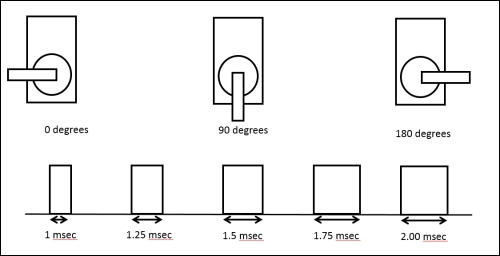Servo motors are somewhat similar to DC motors. However, there is an important difference. While DC motors are generally designed to move in a continuous way—rotating 360 degrees at a given speed—servos are generally designed to move to a limited set of angles. In other words, in the DC motor world, you generally want your motors to spin with a continuous rotation speed that you control. In the servo world, you want your motor to move to a specific position that you control.
This is done by sending a Pulse-Width-Modulated (PWM) signal to the control connector of the servo. The length of this pulse will control the angle of the servo like this:

These pulses are sent out with a repetition rate of 60 Hz. You can position the servo to any angle by setting the correct control pulse.

